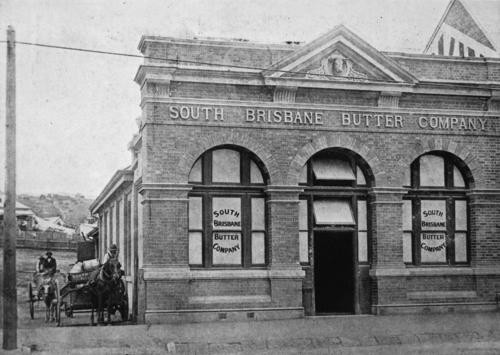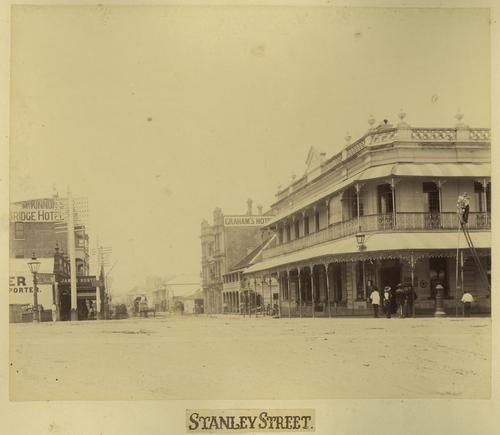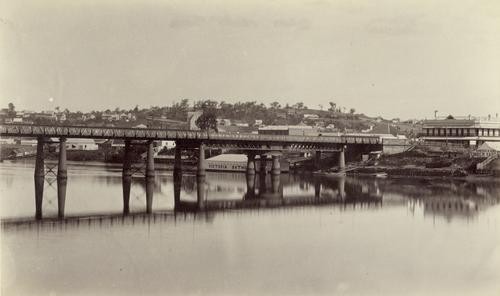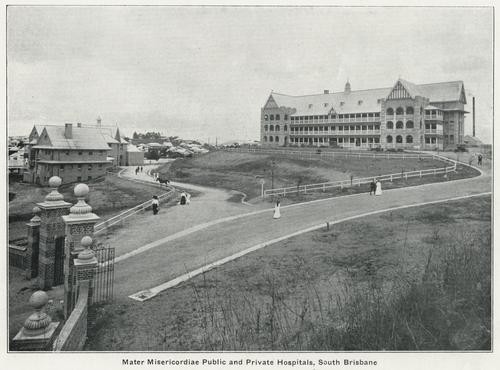The Hale Street Link Bridge and the Tank Street Bridge will soon provide two new cross-river links from the city to Brisbane's south side via South Brisbane. This inner Brisbane suburb, the home of the State Library of Queensland, has an interesting history and has always been closely associated with, and influenced by the development of the central business district.
The name 'South Brisbane' derives from the suburb’s position, on the south bank of the river, opposite 'North Brisbane', now the site of Brisbane's central business district.
The area was originally criss-crossed with small creeks. One watercourse, partly swamp, ran towards the river entering near the site of the Victoria Bridge.
The first sale of land in the South Brisbane area took place on 14 July 1842 in Sydney, with buyers paying from £42 to £100 for allotments.
During the convict period the land had been heavily used for agriculture with maize and other crops being cultivated. By 1849 approximately forty houses existed in South Brisbane, mainly located along the principal streets – Stanley, Russell and Grey Streets.
Some early industries and businesses include:
- Hunter River Steam Navigation Company (1842)
- The Russell Street to Queen’s Wharf ferry known as the “Time Killer” due to the time taken to traverse the river
- Shipping/wharf facilities were a major activity
- South Brisbane Dry Dock constructed 1875-9 was superseded by the Cairncross Dock, which now survives as part of the Maritime Museum. The dry dock serviced private, government and navy ships, including ships visiting Brisbane from overseas. It also serviced submarines during World War Two.
- Cultural Precinct – State Library of Queensland, Queensland Performing Arts Complex, Griffith University/Queensland Conservatorium of Music, Queensland Art Gallery, Queensland Museum
- South Bank Parklands

South Brisbane Butter Company, ca. 1900, John Oxley Library, State Library of Queensland, Image No: 128864
The names of a number of early British politicians are commemorated by South Brisbane street names. These include:
- Stanley Street – named in honour of Lord Stanley, Secretary of State for War and Colonies in the Peel Government. Lord Stanley later became Prime Minister.

Stanley Street, South Brisbane, Queensland, 1889, John Oxley Library, State Library of Queensland, Image No: APO-002-0001-0021
- Peel Street – named in honour of Sir Robert Peel, Prime Minister.
- Grey Street – named for Henry George Grey, Secretary of State for War and Colonies in the Russell Government (1846-53).
- Merivale Street – named in honour of Merivale who was Permanent Under-Secretary of State for War & Colonies (1847-57).
- 1863 – lobbying commenced for a bridge to be constructed across the Brisbane River from South Brisbane, due to the inadequacy of existing cross-river ferries.
- 1865 – the first temporary wooden bridge is built, later to be swept away by flood waters (1867).
- 1874 – the first permanent bridge across the Brisbane River is constructed (Victoria Bridge). This bridge was also later swept away by flood waters (1893).

Victoria Bridge, 1884, John Oxley Library, State Library of Queensland, Image No: API-004-0001-0005
- 1875/79 – South Brisbane Dry Dock constructed.
- 1885/88 – the South Ward of the City of Brisbane was amalgamated with Woolloongabba to become the Borough of South Brisbane.
- 1893 – South Brisbane Town Hall is built.
- 1899 – Somerville House is founded by E.A. Fewings. The school transferred to its present site, from Wickham Terrace, in 1919.
- 1903 – the City of South Brisbane was incorporated.
- 1910 – the Mater Hospital is established.

Mater Hospital, ca.1910, John Oxley Library, State Library of Queensland, Image No: APE-037-01-0004
- 1915 – St. Laurence’s College is established.
- 1925 – Brisbane State High School is established.
Comments
Your email address will not be published.
We welcome relevant, respectful comments.